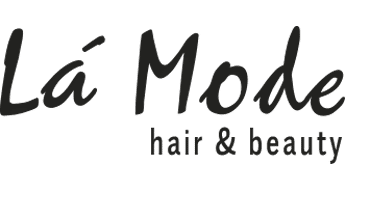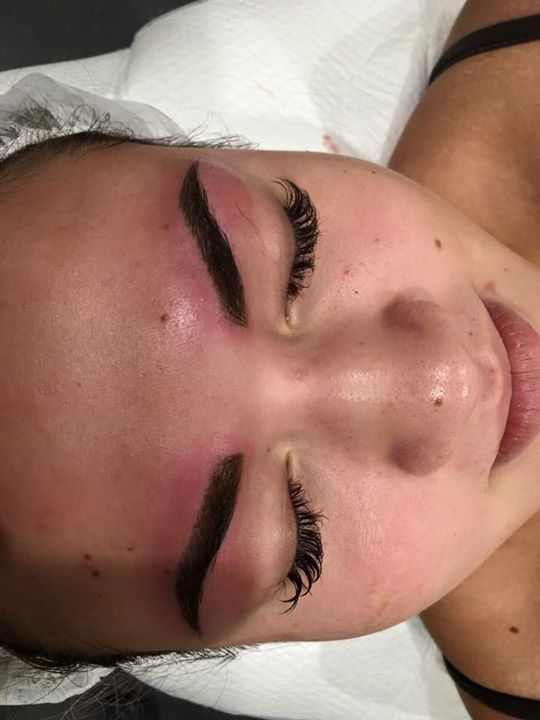
Before and after working progress from dark to light
Before and after working progress from dark to light✨✨ Our hairdressers are fully qualified, and we have created a welcoming and relaxed salon vibe for the whole family to enjoy. Our philosophy is based around one thing – you as our customer. We are committed to providing you with the highest quality of hairstyling and colouring services at La Mode Hair and Beauty Clinic Gympie QLD.
It’s true that most people think “blonde”
It’s true that most people think “blonde” when they think about summer hair ideas, but if you’ve been paying attention lately, you might notice that it’s dark hair that has been making headlines. Whether you’re eyeballing Kim K’s inky shade or the more subtle ‘bronde’, dark hair is a gorgeous, dramatic statement to make for summer.
But becoming a bottle brunette is not without its challenges. Here are ten things you need to know before you go over to the dark side.
1. You’ll need to think about your brows.
If you’re making a significant color change (going from blonde to black, for example), you’ll either need to dye your brows to go along with your new hair or find a fabulous new product to fill them in with. Brow-dyeing should never be attempted at home (all those chemicals so close to your eyes!), so make sure you see a professional if you go the permanent route.
If you decide to fill them in, picking a product that matches your new color is imperative. As a general rule, you’ll always want your brows to be one to two shades lighter than your hair for the most natural look.
2. You’ll discover that “dark” is never just “dark.”
Ask any colorist or bottle brunette what shade she uses and you’ll probably get a confusing answer: most dark shades are a mixture of multiple colors that address different color concerns. For example: someone whose hair gets brassy may want a base color that’s more ashy or violet-based to counter the unwanted gold tones, while someone with a lot of grays may need a splash of gold to effectively cover up their silver strands. You’ll need to do some research before deciding on a color: make sure you talk to your colorist or do your online homework before you take the plunge!
3. The dye can be rough on your skin.
Dark dyes contain a molecule called p-phenylenediamine (PPDA or pPD). Despite being found in most dark-colored cosmetics and tattoo inks, it can cause a nasty skin reaction: swelling, itching, burning and redness. Though full-on allergic reactions are rare, they do happen—and when the cause is permanent dark dye, they happen dramatically.
There’s no way to know in advance if PPDA is going to irritate you, and allergies can develop over time. The smartest thing to do is to make sure that you (or your colorist) always does a patch test before covering your head in dye. If you feel any undue burning or itching, or if your face swells or gets red, rinse your head immediately and contact a doctor. Allergic reactions are nothing to sneeze at!
4. You’ll learn the pains of upkeep.
If you’re just going slightly darker than your natural color, maintenance will likely be really easy. If it’s a more dramatic change, prepare yourself for visible roots. You’ll need to re-up your color every three to four weeks to keep your color fresh and your roots concealed; in between, you can add some color with a gorgeous glaze.
5. Going light again isn’t impossible, but it’s unlikely.
Dark dye is a commitment, if not for life, then at least for the forseeable future: going from dyed dark to light again is VERY HARD. Not only is it technically difficult (skipping over the dreaded brassy stage is nigh impossible), it’s incredibly rough on your hair. If you’re someone who likes to change up their hair color a lot, consider a small change: add some lowlights two to three shades deeper than your hair, rather than going for one solid dark color.
6. You’ll find that box dye might be out.
As wonderful as home hair colors have become, they do have certain limitations. If your dream brunette shade is one to two shades darker than your natural color, pick up a box and go for it. But if you’re going darker than that, you’ll need to see a professional.
Why? Home hair color kits come with a 20 volume developer, which means that its only strong enough to change the hair two shades darker or lighter than it is naturally. If you want to go very dark, you’ll need to mess with different strengths of developer, which is very difficult and best left to professionals. A good colorist is a dyed brunette’s best friend.
7. You’ll need to change your makeup routine.
The makeup that looked good with lighter hair may look too severe (or not severe enough) with darker dyed locks. If your pink blush is making you look a little too much like Snow White, trade it in for a subtle bronzer instead. Be open to experimentation, and remember: when in doubt, a sharp cat-eye always looks good.
8. You’ll need a minute to adjust.
Any major hair change triggers what we here are Daily Makeover like to call “Brain Problems”: when your mind is so used to seeing you one way that any major deviation brings on a OH MY GOD I LOOK SO DIFFERENT THIS IS TERRIBLE hysterical reaction. There’s nothing wrong with the actual look, it’s your brain that has the problem.
9. Prepare to buy new basics.
Hair basics, that is. Think bobby pins, hair ties, combs, clips and headbands—they should all be in a shade that matches your hair. And that means you’ll need to go shopping for your new hair shade. The things we do for beauty!
10. It’s the best thing you’ll ever do.
Seriously. Dark hair makes your eyes pop, your skin look more luminous and creates a beautifully dramatic frame for your face. Once you’ve gone over to the dark side, you’ll never want to come back.



